| |
IL-6 BLOCKADE DECREASES INFLAMMATION AND
INCREASES CD127 EXPRESSION IN HIV INFECTION
|
| |
| |
CROI 2020
Benigno Rodriguez1, Zhengyi Chen1, Curtis Tatsuoka1, Scott F Sieg1, Alan Landay2, Grace A. McComsey1, Brian Clagett1, Chris T. Longenecker1, Carey Shive1, Keith W. Crawford3, Daniela Moisi1, Michael L. Freeman1, Nicholas Funderburg4, Leonard Calabrese5, Michael M. Lederman1
Presenting Author and Institution
Benigno Rodriguez
Case Western Reserve University
Abstract Body
Interleukin-6 (IL6) is a key inflammatory mediator in treated HIV infection. In vitro, we have shown that IL6 drives cell cycling and blocks responsiveness to interleukin-7 (IL-7). In vivo, plasma levels of IL6 are linked to cardiovascular risk and other end-organ complications. We hypothesized that blocking IL6 signaling in vivo could attenuate these effects.
HIV-infected persons with suppressed viremia and CD4 T cell counts >350 were enrolled in a 2x2 crossover trial of 3 monthly IV doses of the anti-IL6 receptor monoclonal antibody tocilizumab (TCZ) and matching placebo. T cell subpopulations, expression of markers of activation, senescence, cycling, and survival were quantified by flow cytometry. Soluble vascular, metabolic, and inflammation indices were measured by ELISA. Significance of treatment-induced changes was assessed by Wilcoxon signed-rank test. Mixed effects models were fitted to generate effect estimates and for covariate adjustment.
Thirty-four participants were enrolled; 29 continued treatment through the crossover visit at week 20. Two discontinued due to adverse events: grade 3 rash and neutropenia. Both resolved without treatment. IL-6 receptor blockade by TCZ led to a profound decrease in plasma C-reactive protein (CRP) (-2037 ng/mL, p<0.001) and a dramatic increase in plasma IL-6 (42 pg/mL, p<0.001). PD-1 expression on naïve (-2%, p<0.001) and central memory (-3%, p,0.01) CD4 T cells decreased significantly; this was accompanied by a significant decrease in naïve CD4 T cell cycling (Ki-67 expression, -0.2 %, p=0.01) and by a significant increase in IL-7 receptor (CD127) expression on naïve (0.7%, p=0.02) and terminally differentiated (3%, p=0.03) CD8 T cells, as well as a significant decrease in plasma IL7 levels (-1 pg/mL, p<0.001). TCZ also led to significant decreases in soluble TNF receptor-1, soluble CD14, soluble CD40, and p-selectin. E-selectin, adiponectin. Most lipid species in plasma including oxidized LDL increased with TCZ. Lp-PLA-2 also increased modestly.
Blockade of IL-6 activity markedly decreases soluble markers of inflammation and indices of CD4 T activation/regulation that have been linked to morbidities in treated HIV infection. TCZ enhances expression of the IL7 receptor CD127 on some CD8 subpopulations, which may explain decreased plasma IL7 levels. The combination of these effects may result in reduced turnover and dysfunction of T cells in treated HIV infection.
Webcast:
http://www.croiwebcasts.org/console/player/44790?mediaType=slideVideo&
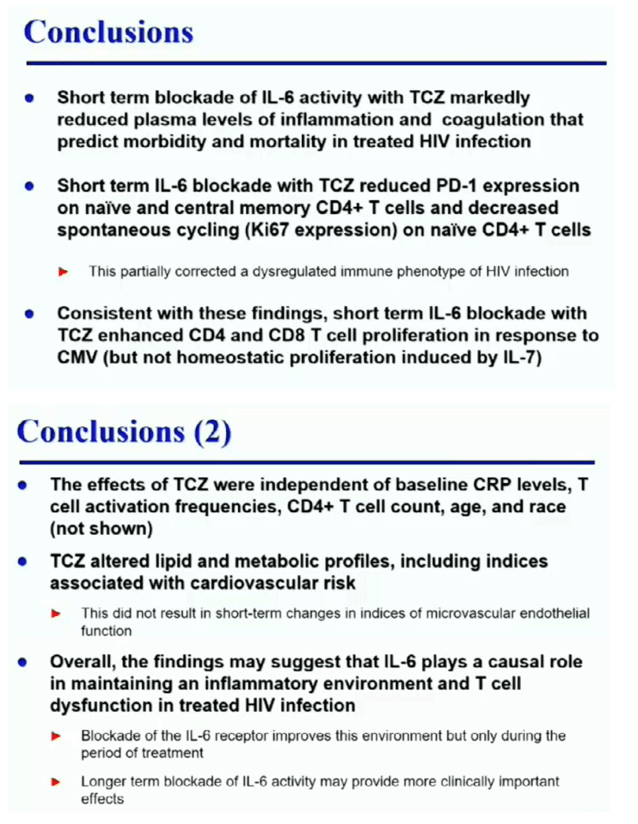
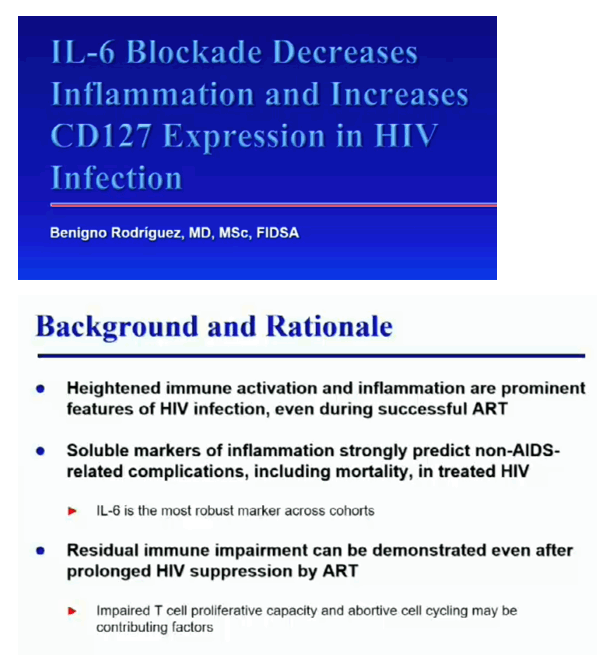
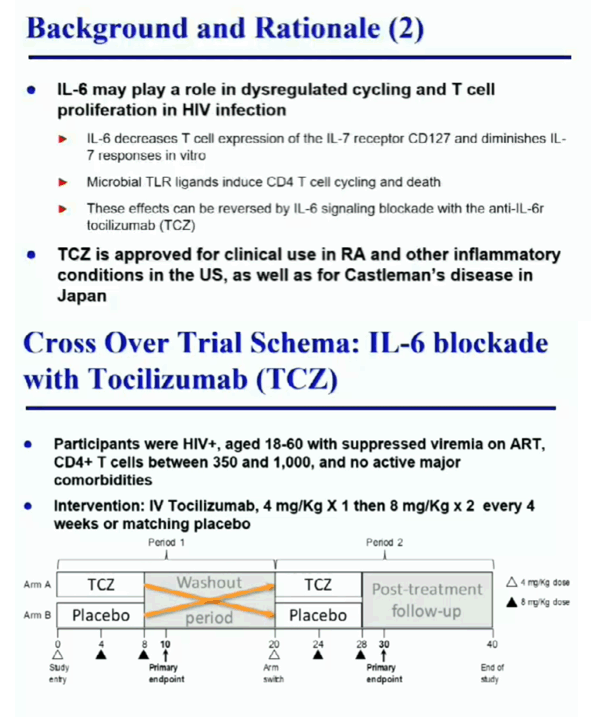
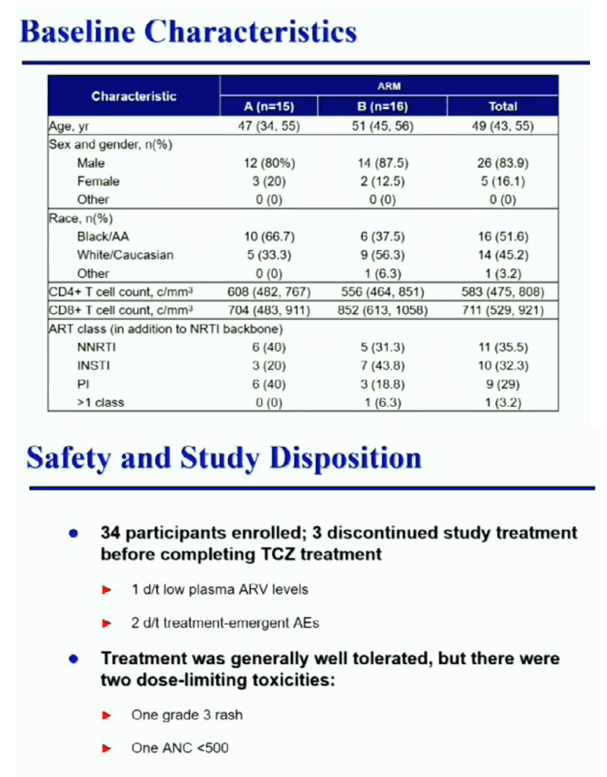
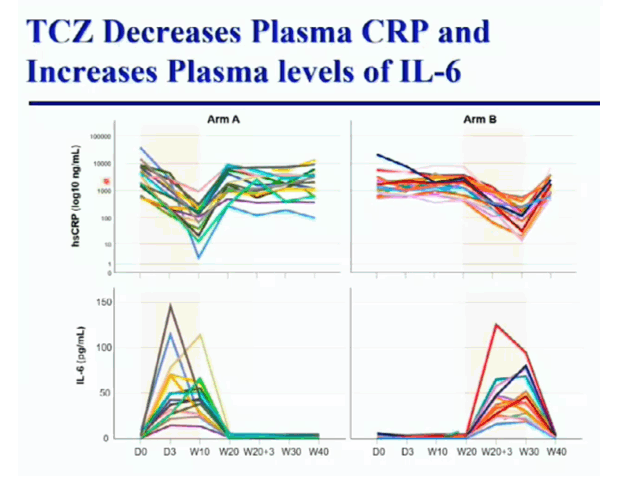
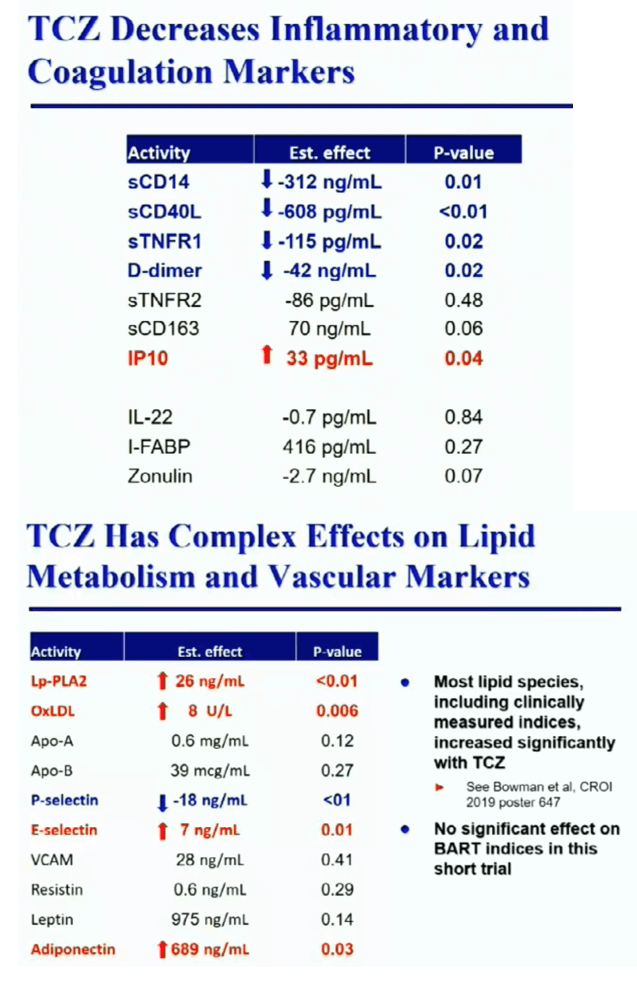
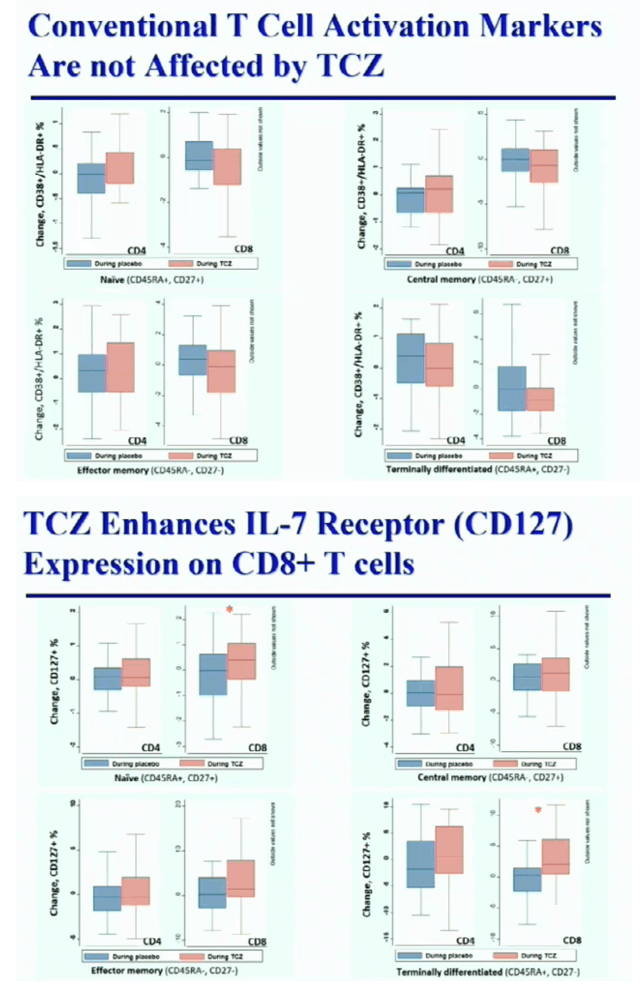
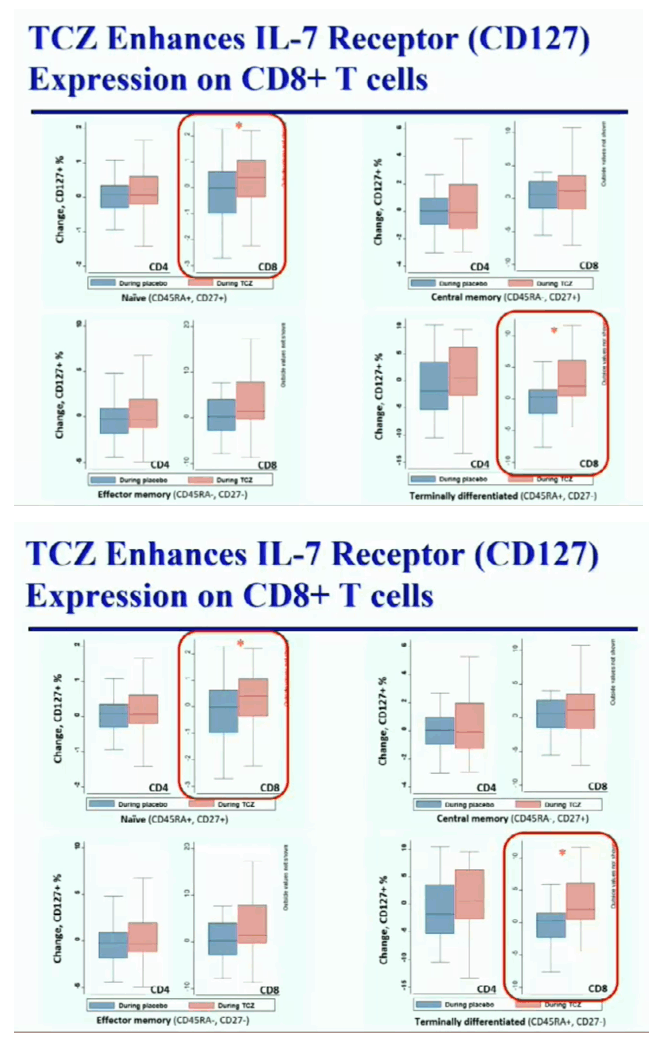
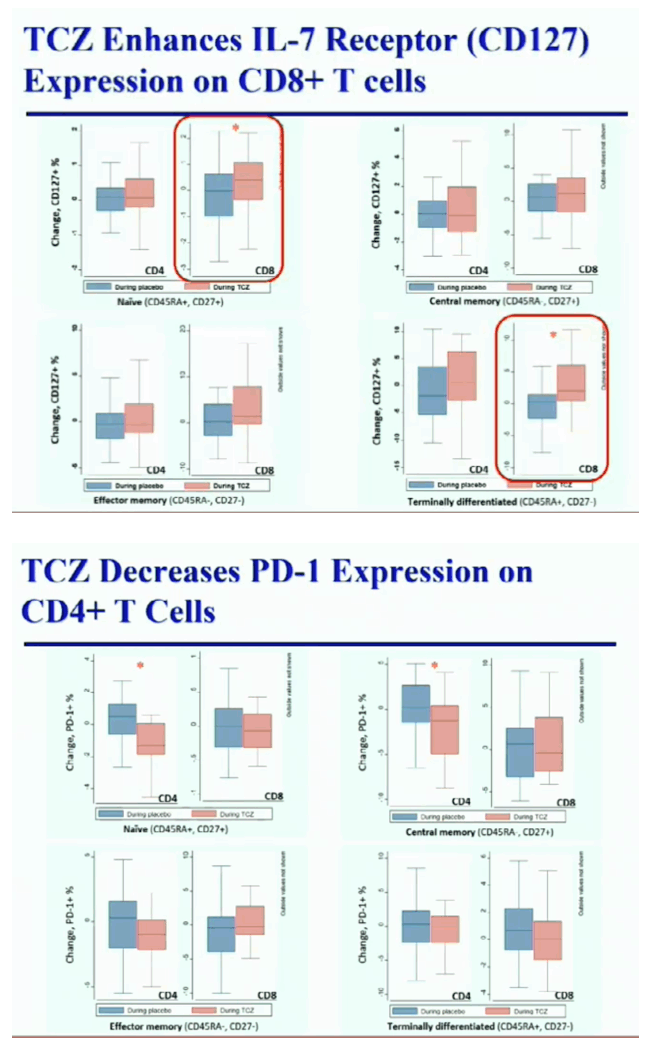

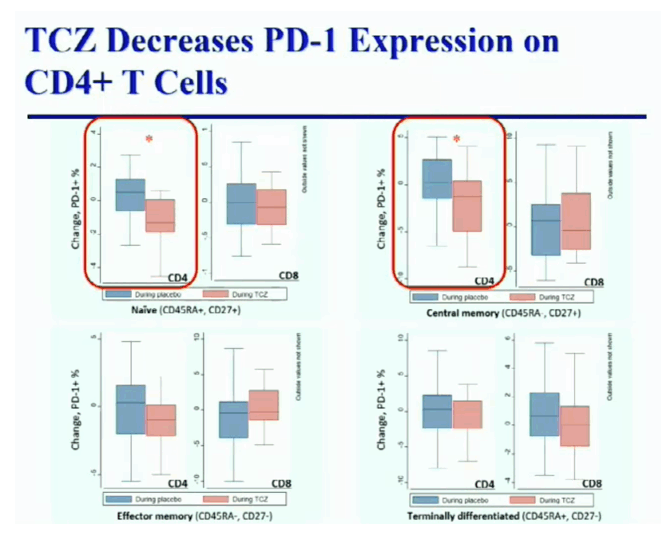
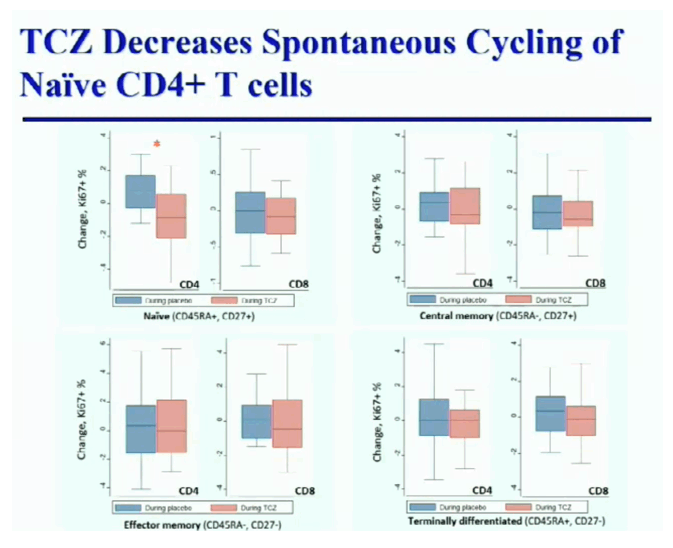
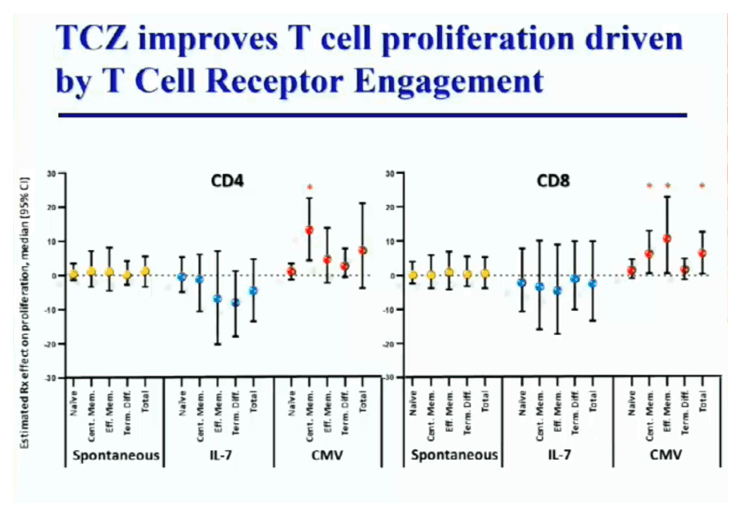
|
|
| |
| |
|
|
|